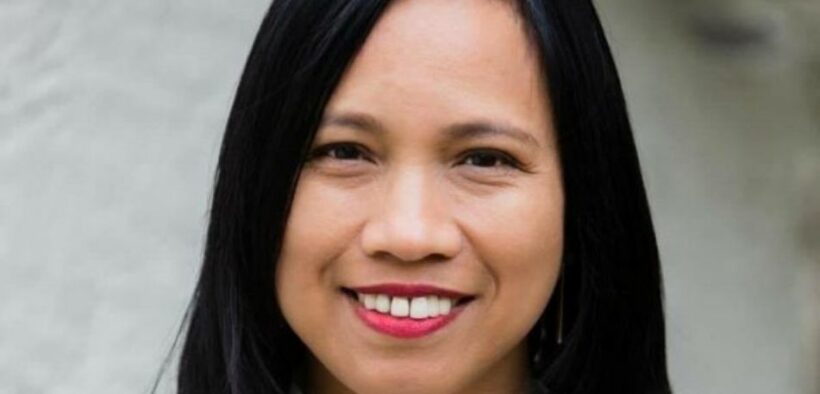Women of Colour Australia (WoCA) is a not-for-profit organisation established in August 2020. The not-for-profit is run by women of colour for women of colour. WoCA champions Australia’s women of colour through programs of education, community support initiatives, and advocacy work.
The organisation was founded by Brenda (Hernandez) Gaddi (she/her), a first-generation migrant/settler from Manila, Philippines. She acknowledges the Wallumattagal clan of the Darug nation as the Traditional Custodians of the land she now calls home.
Brenda will be speaking at the Third Sector LIVE event this coming 3-4 November 2021 at The Grace Hotel, Sydney. Join this highly anticipated event by signing up here.
Can you tell us in what ways does inequality manifests in the workplace?
There are multiple ways in which inequality manifests itself in the workplace, and some are more obvious and overt than others. When the term inequality comes up in the context of the workplace, we immediately think about gender diversity ratio or gender pay gap as these are the most talked about issues. While these are thankfully rising up the agenda, there are other under-the-radar inequalities that are just as important, that are often unacknowledged and woefully unaddressed.
The Workplace Gender Equality Act 2012 needs to be broadened and include more intersectional data so we can better understand the lived experiences of First Nations women, women of colour, migrant and refugee women, women with disabilities and LGBTIQA+ women and non-binary people, who continue to be minoritised and racialised in the workplace and are significantly under-represented across industries, especially in senior roles.
First Nations women, women of colour, migrant and refugee women, face unique struggles and inequalities at the hands of patriarchy and white supremacy. They are not offered the same career opportunities as their white peers despite being just as or more than qualified and experienced. They are not taken seriously, their opinions are often dismissed, they are silenced or get talked over, they face micro-aggressions on a regular basis and most of them have to code-switch once they are in the workplace due to the compounded pressure to downplay aspects of their identity to conform and avoid highlighting negative stereotypes in work environments. All of these elements combined create a workplace that is psychologically unsafe for these women and result in racial trauma.
Women with diverse cultural identities do not spring from the same starting block as Anglo and/or European women. The additional challenges, barriers and constructs that First Nations women, women of colour, migrant and refugee women come up against in the workplace are often unscrutinised.
How does social context influence our perceptions of race, class, and gender?
Gender equality and the fight for racial equality are inextricably linked and need to be tackled together. Our lived experiences, our upbringing, our aspiration to belong to a specific group as well as our sense of self-identity, all shape our perception of race, class and gender and ultimately develop our own cognitive biases.
Throughout Sydney’s 4-months-long lockdown and the way it was handled, especially the more severe state-sanctioned measures in South-West Sydney was a display of postcode prejudice that continues to plague Australia. The high incarceration rate of Aboriginal and Torres Strait Islander peoples is a systemic and structural racialised violence that continues to perpetuate to this day.
What are the ways that we can better include women of colour in feminist movements?
The mainstream feminist movements that exist today are still deeply rooted in, and in favour of, white supremacy. It is not a system that’s broken, but rather, it was built this way, to serve the specific purpose of maintaining white supremacy. Most feminist movements deliberately choose to focus only on issues that predominantly affect White women to advance their own representation across the board. True feminism needs to be intersectional.
The most important thing that white women can do to show their solidarity is to first acknowledge that they benefit from a system not designed for First Nations women, women of colour, migrant and refugee women. They need to decentre themselves, make space for minoritised and racialised women. If we are going to advocate for women, speak on the issues of women, then all women should be involved as each brings their own lived experiences. True allyship in feminist movements has the potential to move the needle and create positive social impact for women of colour.
Are there steps that movements and organizations can take to be more inclusive and intersectional?
The interest in diversity — gender, racial and ethnic, LGBTQ+, age, and ability, among other dimensions —has skyrocketed over the past couple of years. The murder of George Floyd in Minneapolis last year ignited worldwide protests and social unrest, prompting governments corporations, organisations and non-profits to re-evaluate their Diversity and Inclusion (D&I) policies in nearly every corner of the world.
The benefits of workplace diversity have long been documented. According to a recent study by atWork Australia, businesses that prioritise diversity and inclusion are set to achieve an average of 28 % higher revenue, 30 % higher profit margins and double the net income than those that don’t. So, it’s not surprising that LinkedIn data revealed a 71% increase worldwide in all D&I roles over the past five years. But are these initiatives working?
The recent Women of Colour in the Australian Workforce (WoCA) survey sheds light onto the stark reality that women of colour face at work. While organisations are ramping up their D&I efforts, our survey shows that 60% of women of colour continue to experience discrimination and prejudices in the workplace. Despite the rhetoric of diversity and inclusion, clearly existing D&I programs are not working.
Organisations, as well as different movements, need to approach inclusion through a lens of intersectionality. Below are a few ways in which they can do that:
- For D&I to have a higher success rate, they must first and foremost be led by the people who will be directly affected by D&I policies. Women of colour must be given a seat at the table, to develop and shape the strategy from the outset. They need to be afforded the authority to enact these policies otherwise it is just tokenism.
- Organisations and movements need to start by having frank and open conversations about race and racism in the workplace. CEOs, Board members and senior executives need to embed anti-racism policies, programs and beliefs into every facet of the organisation.
- Create a safe mechanism for employees to report prejudice and discrimination and take action.Train bystanders on how to intervene when they witness discrimination and how to become active allies.
- Be open to try new approaches if your practices do not bring employees with intersecting and overlapping identities equal access to opportunities.
Lourdes Antenor is an experienced writer who specialises in the not-for-profit sector and its affiliations. She is the content producer for Third Sector News, an online knowledge-based platform for and about the Australian NFP sector.
















































































































































